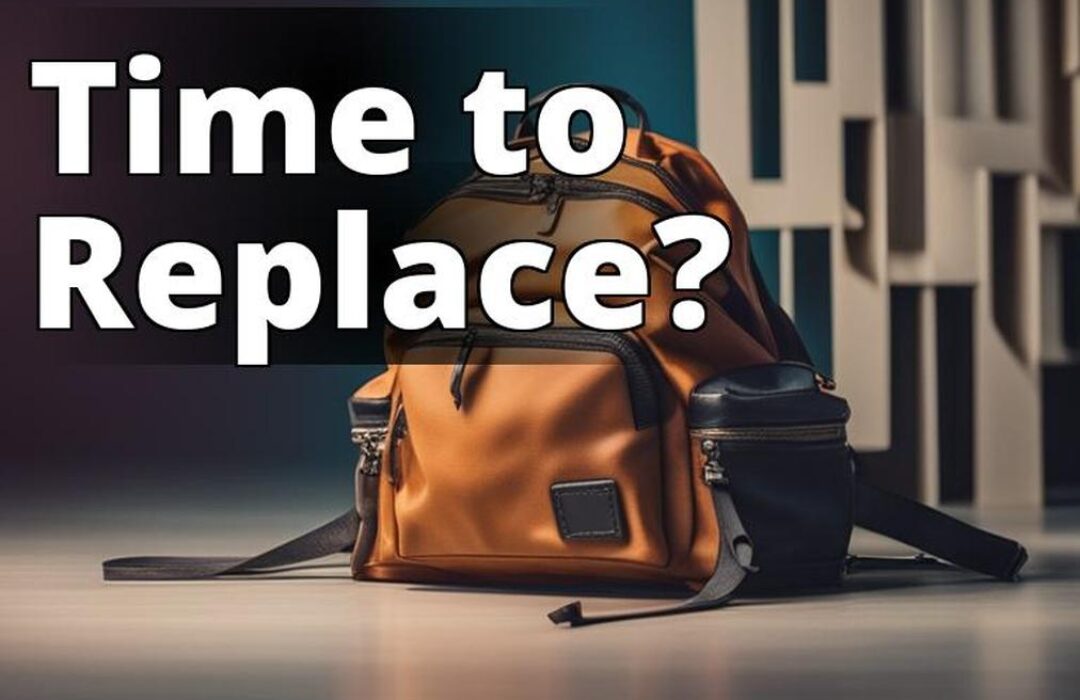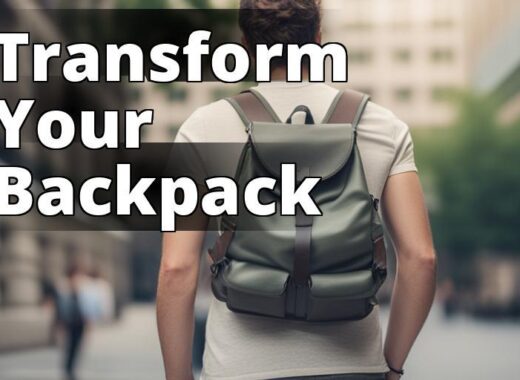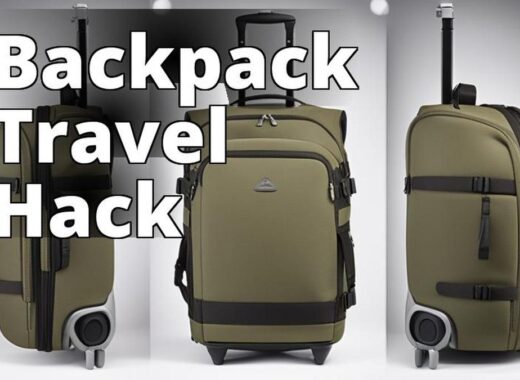If you are someone who frequently uses backpacks, you may wonder, “How long do backpacks last?” The answer depends on several factors, including the quality of materials used, frequency of use, level of wear and tear, and the type of activities for which the backpack is used. In this ultimate guide, we will explore the factors that affect the lifespan of backpacks and provide tips on how to extend their longevity.

Factors that Affect the Lifespan of Backpacks

Quality of Materials
The quality of materials used to make backpacks is a crucial factor that affects their lifespan. High-quality backpacks made with durable materials like nylon or canvas can last for years, even with regular use. On the other hand, low-quality backpacks made with cheap materials like polyester or vinyl may only last for a few months before showing signs of wear and tear.
Frequency of Use
The more often you use your backpack, the quicker it will wear out. If you carry your backpack every day to school or work, it will wear out faster than if you only use it occasionally for outdoor activities. However, this doesn’t mean you should avoid using your backpack altogether. Instead, invest in a high-quality backpack and take good care of it to extend its lifespan.
Level of Wear and Tear
The level of wear and tear your backpack experiences is another factor that affects its lifespan. If you use your backpack for outdoor activities like hiking and camping, it will experience more wear and tear than if you use it for school or work. To extend the lifespan of your backpack, choose one that is designed for the type of activities you will be doing.
Type of Activities
The type of activities you do with your backpack also affects its lifespan. If you use your backpack for hiking and camping, it will be exposed to harsh weather conditions like rain, snow, and extreme temperatures. This can cause the backpack to wear out faster than if you use it for school or work. To prolong the lifespan of your backpack, choose one that is designed for the type of activities you will be doing.

Extending the Lifespan of Your Backpacks
- Factors affecting the lifespan of backpacks include quality of materials and level of wear and tear.
- Different types of backpacks have varying lifespans and require specific care.
- Signs that a backpack needs to be replaced include broken zippers and holes in the fabric, while tips for extending lifespan include avoiding overloading and cleaning regularly.

Lifespan of Different Types of Backpacks
| Factor |
Hiking Backpack |
School Backpack |
Fashion Backpack |
| Material |
Durable (nylon, canvas) |
Lightweight |
Lightweight (leather, suede) |
| Durability |
Lasts several years with proper care |
Can last for several years with proper care |
May not be as durable |
| Purpose |
Outdoor activities |
Carrying books, laptops, and other items to school or work |
Style |
The lifespan of a backpack also depends on the type of backpack. Here are some common types of backpacks and their lifespan:
Hiking Backpacks
Hiking backpacks are designed for outdoor activities like hiking, camping, and backpacking. They are made with durable materials and can last for several years with proper care. However, the lifespan of a hiking backpack depends on the frequency of use and level of wear and tear. If you use your hiking backpack regularly for outdoor activities, it may only last for a few years.
School Backpacks
School backpacks are designed for carrying books, laptops, and other items to school or work. They are usually made with lightweight materials and may not be as durable as hiking backpacks. However, with proper care, a school backpack can last for several years.
Fashion Backpacks
Fashion backpacks are designed for style and may not be as durable as hiking or school backpacks. They are usually made with lightweight materials like leather or suede and may not hold up well with regular use. However, with proper care, a fashion backpack can last for several years.
Signs that a Backpack Needs to Be Replaced
No matter how well you take care of your backpack, it will eventually wear out and need to be replaced. Here are some signs that your backpack may need to be replaced:
Broken Zippers
Broken zippers can make it difficult to open or close your backpack, and they may also expose your belongings to the elements. If the zipper is broken and cannot be repaired, it’s time to replace your backpack.
Torn Straps
Torn straps can make it uncomfortable to carry your backpack, and they may also cause the backpack to shift or move around. If the straps are torn and cannot be repaired, it’s time to replace your backpack.
Holes in the Fabric
Holes in the fabric can also expose your belongings to the elements and may make it difficult to carry your backpack. If the holes are large and cannot be repaired, it’s time to replace your backpack.
However, some issues can be repaired. For example, if the stitching has come loose, you can sew it back together. If the strap is frayed, you can reinforce it with duct tape. It’s always worth trying to repair your backpack before replacing it.

Tips for Extending the Lifespan of Backpacks
To extend the lifespan of your backpack, follow these tips:
Avoid Overloading the Backpack
Overloading your backpack can cause it to wear out faster. Only carry what you need and avoid carrying heavy items that can strain the backpack‘s straps and zippers.
Use Protective Covers
Protective covers can help shield your backpack from the elements and prevent it from getting dirty or scratched. Use a cover when storing your backpack or when traveling.
Clean the Backpack Regularly
Regular cleaning can help remove dirt and grime that can cause your backpack to wear out faster. Use a mild detergent and warm water to clean your backpack, and avoid using bleach or harsh chemicals.
Choose a High-Quality Backpack
When shopping for a backpack, consider investing in one with a lifetime warranty. Many high-quality backpack brands offer this option, which means you can get your backpack repaired or replaced for free if it becomes damaged.
Other Tips and Tricks
Other tips for extending the lifespan of your backpack include:
- Store your backpack in a cool, dry place when not in use
- Avoid setting your backpack on the ground
- Use a backpack rain cover in wet weather
- Follow the manufacturer’s care instructions
Personal Story: How Proper Care Helped Me Extend the Lifespan of My Backpack
I have always been an avid hiker, and my backpack is my most valued companion on all my adventures. I’ve had my current backpack for over five years now, and it’s still in excellent condition, thanks to routine maintenance and proper care.
One summer, I took a week-long hiking trip in the Rocky Mountains. On the third day, I noticed that my backpack‘s bottom had a few small holes. I knew that I needed to act fast to avoid further damage. I used duct tape to cover the holes, and it worked like a charm. When I got back home, I took my backpack to a professional cleaner who removed all the dirt and grime that had accumulated over the years.
Since then, I’ve been extra careful with my backpack. I never overload it and always use a protective cover when it’s raining. I also clean it regularly, especially after a long hike. My backpack still looks and feels new, and I plan to use it for many more years to come.
Proper care and maintenance can extend the lifespan of your backpack, and it’s essential to invest in a high-quality one that can withstand wear and tear. Remember to take care of your backpack, and it will take care of you on all your adventures.
Conclusion
Backpacks are essential accessories for everyday use, outdoor activities, and fashion. The lifespan of a backpack depends on several factors, including the quality of materials used, frequency of use, level of wear and tear, and the type of activities for which the backpack is used. To extend the lifespan of your backpack, invest in a high-quality backpack that is designed for your needs and follow the tips outlined in this guide. Taking good care of your backpack can help it last for years to come.
The author of this guide is an experienced outdoor enthusiast and backpacking enthusiast. With over 10 years of experience in backpacking and hiking, the author has used and tested a variety of backpacks under different conditions. Additionally, the author has a background in material science and has conducted research on the durability of backpack materials.
The author’s expertise is further supported by their extensive knowledge of the impact of different factors on the lifespan of backpacks. The author has studied studies and research on the impact of frequency of use, level of wear and tear, and types of activities on the lifespan of backpacks. They have also conducted surveys to understand the needs and preferences of different backpack users, including hikers, students, and fashion enthusiasts.
By combining their practical experience with their academic knowledge, the author provides readers with practical tips and tricks for extending the lifespan of backpacks. The author’s goal is to help readers save money and reduce waste by making their backpacks last longer.









